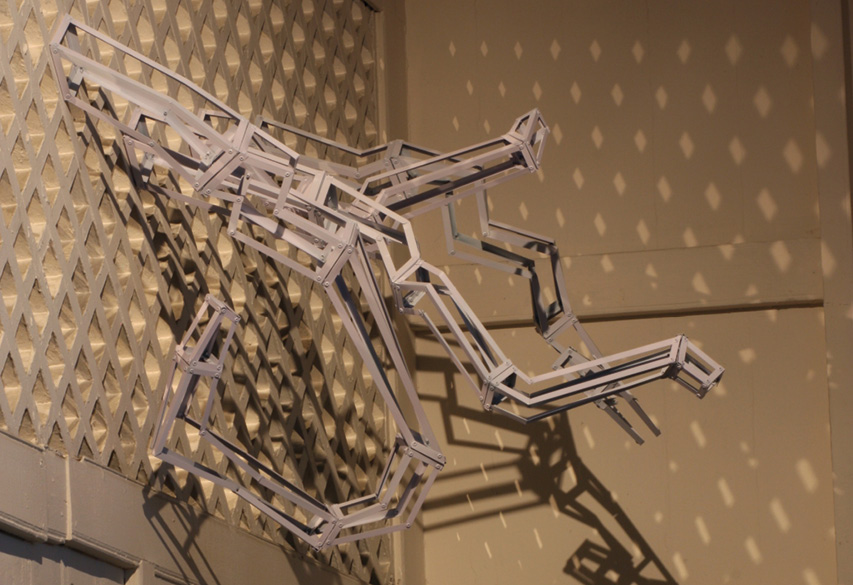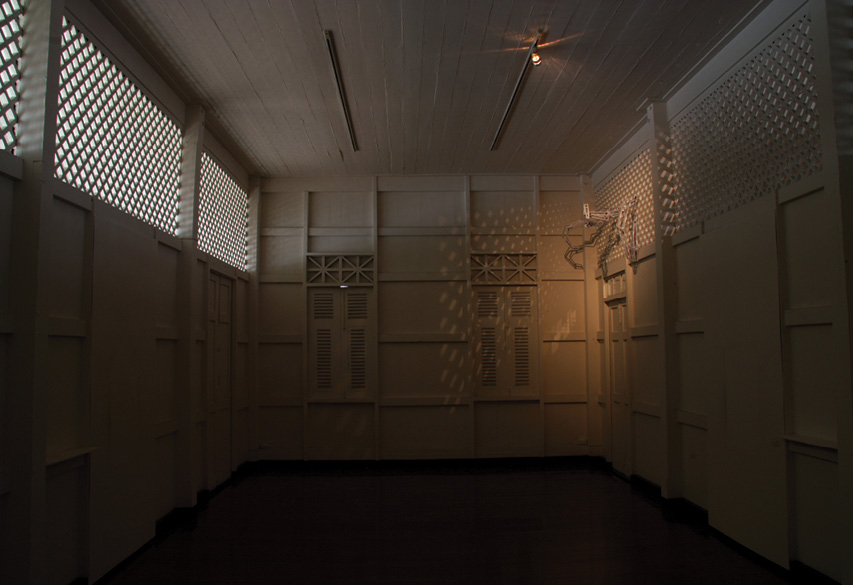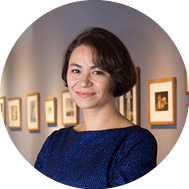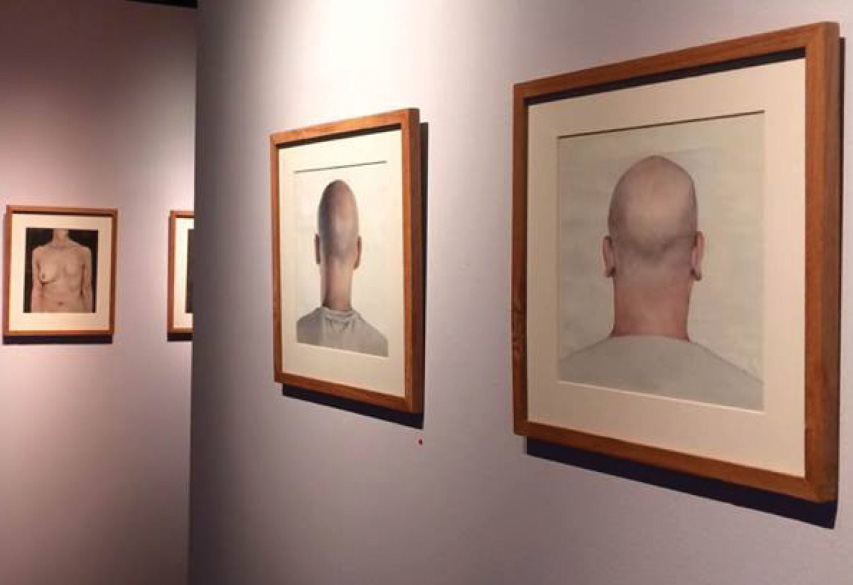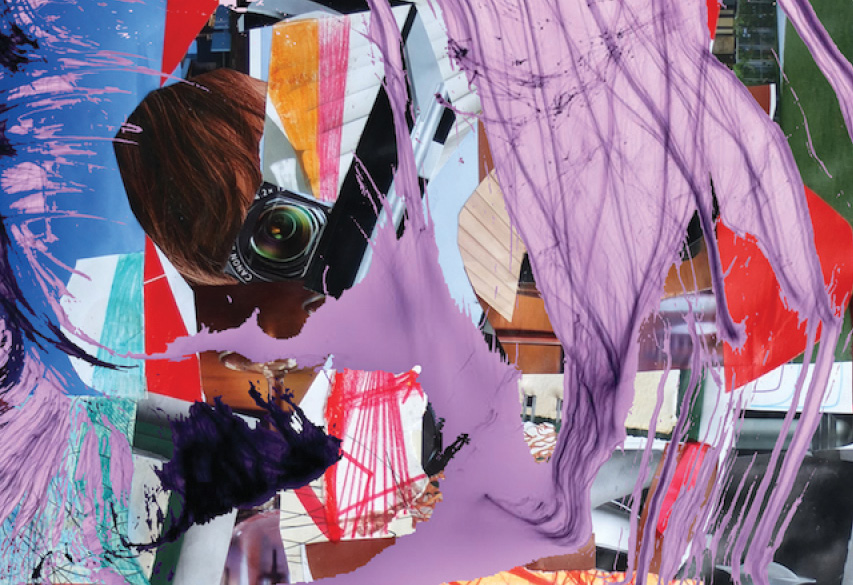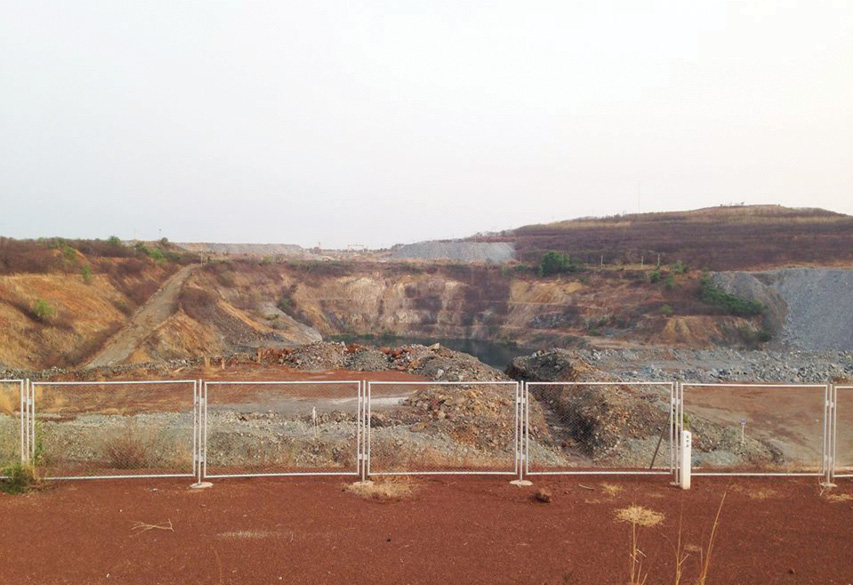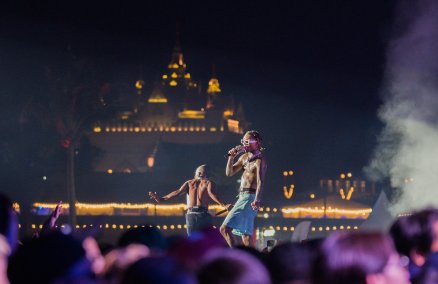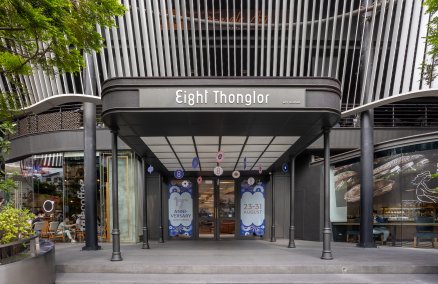Next year Thailand is set to welcome not one, not two, but three art biennials. The largest, Bangkok Art Biennale (Nov, 2018-Feb, 2019), has the backing of ThaiBev and other large corporations, and will take works by some 70 contemporary artists to notable heritage sites along the Bangkok riverside under the stewardship of Prof. Dr. Apinan Posyananda (see below). Another, the similarly named Bangkok Biennial (Jul 7-Sep 3, 2018), is organized by an anonymous underground group who’ll present autonomous pavilions around the capital. The third event, Thailand Biennale (Nov 2, 2018-Feb 28, 2019), will initially take place in Krabi with the backing of the Ministry of Culture and is to be helmed by China’s Prof. Jiehong Jiang of Birmingham City University. With each event claiming to be Thailand’s first international-scale contemporary art festival, we speak to some of the country’s leading arts figures about whether we’re entering an exciting new age for Thai art or facing another false dawn.

Dr. Apinan Poshyananda
Chief executive of Bangkok Art Biennale
The former Permanent Secretary of the Ministry of Culture is now the artistic director of Bangkok Art Biennale as well as its chief executive. He is banking on pulling in over 3 million visitors during the biennale's four-month period.

Why host a biennale now?
We’ve wanted to host it for a long time actually, but the social malaise and political upheavals of the past decade have made it difficult to organize. I tried to build a similar thing with the Siam Art Fair at Crystal Design Center back in 2010, however it was a one-off.
Do you think education and lack of funding are key factors in halting the development of the arts in Thailand?
Definitely. Children are being taught by non-specialist teachers. We put so much emphasis on academic subjects like math and science, and push children to pursue conventional career paths like becoming a doctor, engineer or banker. So, there’s an enormous gap in the creative sector and creative economy. If we can build it up, it will raise the country’s GDP. An event like this works as a real-life example of what the creative economy is, as the government tends to change their definition. Another thing is the poor art infrastructure: the gallery model here is largely based on trust, while galleries abroad operate based on contracts. Thai artists here tend to float, as they don’t trust the galleries—they see them as middlemen. Artists would rather sell their work directly to buyers so they don’t lose out on profit. The gallery system here needs to grow up. As we have around 30 galleries here, I’ve been trying to create an association, but galleries see each other as competitors.
Do you think censorship is a factor too?
First of all, you’ll need to define what censorship is and in what context.
In the context of work being taken down at Gallery Ver [in June].
The soldiers were at Cartel Artspace Gallery prior to Gallery VER because Tada Hengsapkul’s “The Shards Would Shatter At Touch” exhibited a portrait of [former lese majeste convict] Pronthip Mankong without her consent. But it was already taken down before the soldiers came so they didn’t see it anyway. I have to say that what Tada Hengsapkul was doing was very challenging but it was infringing the law. An incident like this changes the social atmosphere of what censorship means. That’s why art education is so important; students need education, artists needs education and soldiers need education on what a biennale is. The event aims to open up minds of those with a more conservative stance.
Kawita Vatanajyankur, BACC 2016
Is that why the theme is “Beyond Bliss”?
The theme is not romanticizing the notion of “bliss”; it’s a broad theme so that artists can interpret and question, what if you cannot reach the state of bliss that’s possible through social, political or environmental issues.
What do you think about Bangkok Biennial?
It’s refreshing and welcoming to see something like Bangkok Biennial. Essentially, “biennale” and “biennial” are the same word with the same purpose, so I think what they’re doing is great. With a big event like this, it creates repercussions where smaller art events can be hosted. We need to be more active and host more events like Bangkok Art Biennale to widen the understanding of art and of what the creative economy can generate.
What does an event like yours mean for emerging artists?
This event will help Thai artists make the leap onto the international circuit. Usually in Thailand, artists find success through competitions rather than being exhibited, and it could take an entire lifetime to receive international publicity. The event will also benefit the local community, by opening minds as to what art can be. Students can become more aware of what the art industry has to offer.
Rirkrit Tiravanija, BACC 2016

Brian Curtin
Lecturer + Art Critic
A lecturer at Chulalongkorn University and an art critic who's written for magazines like Artforum and Frieze, Curtin is one of Bangkok's foremost international curators, who oversees the exhibitions at H Gallery and H Project Space. He also runs a monthly queer-focused art talk at Tentacles, and is currently writing a book on Thai contemporary art, Essential Desires: Contemporary Art from Thailand, for UK publishing house Reaktion Books.
Jedsada Tangtrakulwong, H Project Space 2011
What’s your take on Bangkok’s contemporary art scene right now?
The growth of Bangkok’s creative sector is married to the economy, whether it's from tourism or entrepreneurship. Recently, it’s been accelerating thanks to regeneration projects like Charoenkrung Creative District, Warehouse 30, Chang Chui, Bangkok Art Biennale and the new government-sponsored Museum of Contemporary Art.
What holds back the development of the arts in Thailand?
The situation for art criticism in Bangkok and Thailand is dire. The lack of dialogue is particularly bothersome because Thailand has produced remarkable academics in the field, like Thanavi Chotpradit, a lecturer in Modern and Contemporary Thai Art History at Silpakorn University and author of The Silence in Thai Contemporary Art, which discusses the impact of politics in art. A recent example of this direness was when a gallery launched an art-writing event with ill-informed promotional material packed with lousy phrasing and basic grammatical errors. Criticism is one vital means of keeping market-driven art endeavors in check. You could say that from this incident, art criticism in Bangkok is already dead.
Jedsada Tangtrakulwong, H Project Space 2011
Do you think censorship is also a factor?
Yes, repressive conditions will simply drive artists out of the country, but censorship won’t affect the quality of an artist’s work.
What does the future hold for emerging artists after events like the two biennales coming up?
To answer this question we have to look back to the Thailand Eye exhibition at Saatchi Gallery in London, 2015, and ask whether that aided any of the artists’ careers. We can argue for the importance of local genealogies, but in our current era the concept of “local” is surely becoming implausible when so flagrantly used by those in service to a military government.
Which biennial event do you think will represent Thai contemporary art more truthfully?
We should perhaps not look at it as a competition, but aim to understand what each does and therefore what each doesn’t do.
Myrtille Tibayrenc
Artist-Curator
Best known as the former director of Toot Yung Art Center, Tibayrenc also co-directs Bukruk Urban Arts Festival, a 10-day annual project spanning visual arts, music and talks.
Sublimation
What holds back the development of the arts in Thailand?
Funding is one thing, as the Ministry of Culture only funds projects and not spaces. A gallery like Speedy Grandma is an example of a space that deserves funding as they are very active with a great dynamic. The work may not be easy to sell but the space regularly engages with the local community.
Do you think censorship is also a factor?
Yes and no. Artists need to be angry to fuel their work.
Sublimation
Who do you think is behind the Bangkok Biennial?
Since it’s a community-based project they’re trying to involve as many people as possible. But I’d guess the initiator was [Chiang Mai-based contemporary art veteran] Mit Jai Inn—it sounds like something he’d do.
Do you think having three biennials in 2018 will boost the country's art scene?
If they’re done well and the money involved actually goes towards the arts. As the Bangkok Art Biennale is being sponsored by large corporations, I feel like they might take a more conservative route, especially with the theme "Beyond Bliss", just to draw tourists in. That could affect the quality of the work being presented and even push back the art scene. Also being under junta rule, I don’t think Bangkok can compete with other cities’ biennales like Fukuoka or Gwangju, as Japan and South Korea are more open-minded and have been supporting the arts for a lot longer. Maybe in the next 10 years, Bangkok will become a key destination for contemporary art.
X
Contemporary Artist
Preferring to remain anonymous, X is an active contemporary artist with local and international success who’s participating in the Bangkok Biennial.
1561 (After Douglas Gordon)
How did you become involved with Bangkok Biennial?
I am not one of the initiators, as others believe. I am only an invited artist. I would say yes if any art organization invited me to participate in such an event.
What holds back development of the arts in Thailand?
Aside from the lack of funding and education, we also lack diverse participation from different organizations and sections of society. There’s also a problem with power within the arts community, with those at the top restricting what we can say in society.
1563 (After Wolfgang Tillmans)
Do you think there is censorship within the art community?
Yes. Censorship is holding back the development of human civilization, and freedom of expression is absolutely vital to art.
What’s the future like for emerging artists?
The future is like dusk. It is getting darker and darker.
Pornpilai and Jiradej Meemalai
Founders of Baan Noorg Collaborative Arts and Culture
This interdisciplinary art duo go by the name Jiandyin, and run the non-profit artist education initiative Baan Noorg Collaborative Arts and Culture in Ratchaburi, which has become involved with Bangkok Biennial.
The Ontology of Gold Magic Mountains
Why did you decide to become a part of Bangkok Biennial?
We believe that central authority does not really exist: no central government and no single authority on art and culture. We feel there is a multitude of voices out there that are not currently being heard. We want to hear them and we want them to hear each other.
What’s holding back the contemporary art scene?
Politics. The Thai art scene is still dominated by the authorities. The lack of funding does not hold back creativity, as such. Projects with a shortage of funding are often made possible through collaborative strategy. But it’s vital that art and cultural administrators at the central government level obtain sufficient art education in order to project a vision for the future.
What impact does censorship have on creativity?
Censorship may narrow an artist’s working conditions, but it never confines an artist's thoughts or ideas.
What’s the future like for emerging artists?
Emerging and aspiring artists have the power to create their own future. Their future is mainly down to themselves.
Five Thai Contemporary Artists to Watch

Jakkai Siributr
Jakkai is known for his quirky use of textiles, weaving and stitching narratives on civil service uniforms and creating temporary structures to convey Thailand’s rapid changes and ongoing political instability.

Makha Na Ayutthaya
After debuting in 2014 with a solo show at WTF Gallery, this artist found more success at Gallery Ver back in July. Makha’s still and mechanical sculptures made from old-school furniture emphasize the functionality of discarded objects, while also questioning the two pillars (monarchy and religion) of Thai society.

Orawan Arunrak
Featured as an artist to watch in ArtAsiaPacific’s New Currents list back in 2014, this multidisciplinary artist’s career is steadily on the rise. Inspired by everyday objects, Orawan’s latest work (EXIT-ENTRANCE, Berlin) examine the similarities and differences of the physical and spiritual worlds across various cultures through drawings and audio components.

Tada Hengsapkul
Named on Forbes’ 30 under 30 list for Asia for 2016, Tada’s photography unapologetically presents youth in a raw and stripped-down form, gaining him spots in group shows as far afield as Australia, China and New York, as well as lots of international media attention.

Tulapop Saenjaroen
This Slade School of Art graduate uses humor to ambiguously challenge the absurdity of everyday life through Thailand’s cultural symbols and practices. Heavily active in the independent film scene, his work has been shown internationally at London’s Institution of Contemporary Art (ICA) and Gwangju’s Asia Culture Centre.
Note: This story was amended on Sep 9, 2017. The original piece referred to an event called Bangkok Art Biennial. The correct name is Bangkok Biennial.




